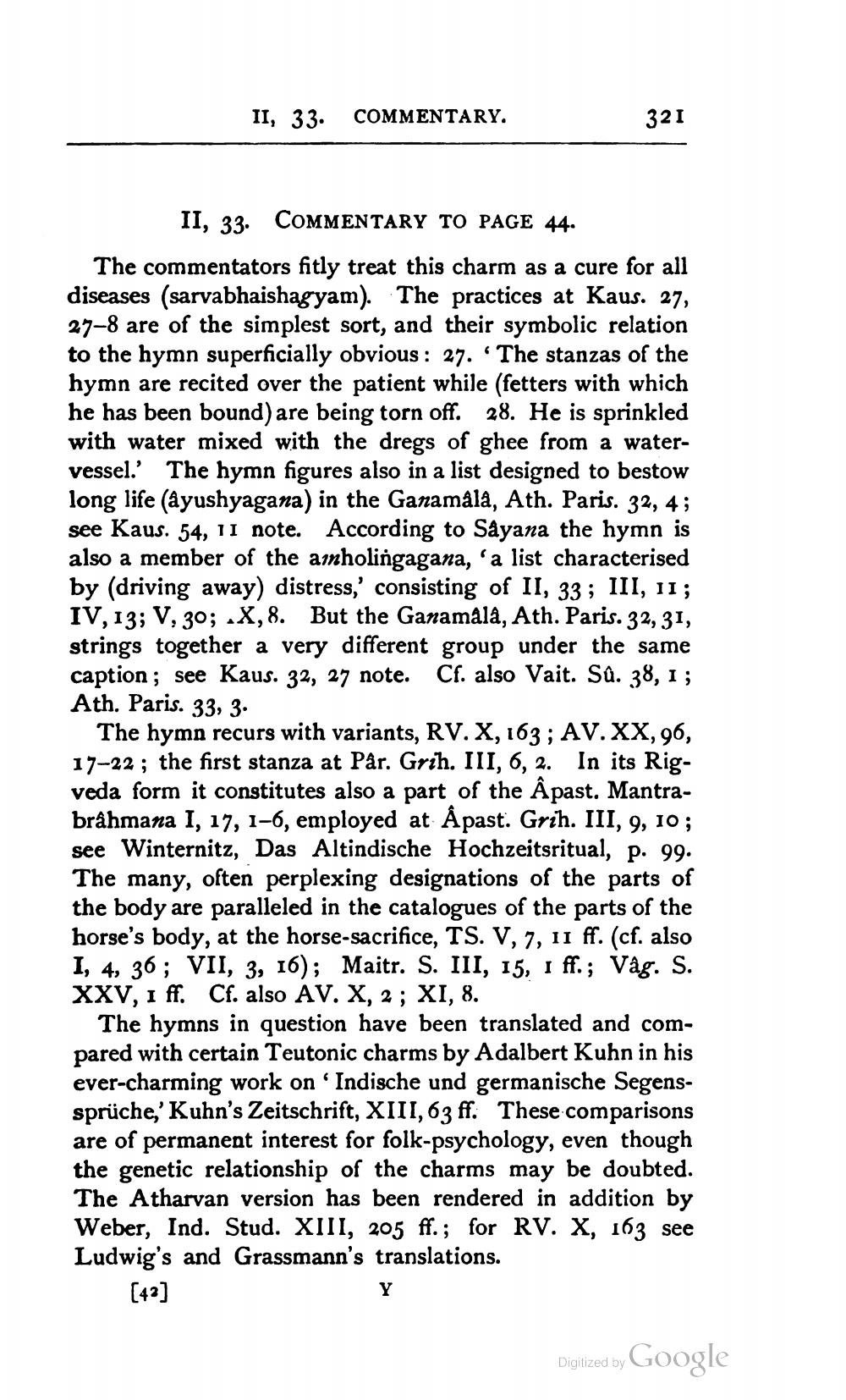________________
II, 33. COMMENTARY.
321
II, 33. COMMENTARY TO PAGE 44.
The commentators fitly treat this charm as a cure for all diseases (sarvabhaishagyam). The practices at Kaus. 27, 27–8 are of the simplest sort, and their symbolic relation to the hymn superficially obvious: 27. 'The stanzas of the hymn are recited over the patient while (fetters with which he has been bound) are being torn off. 28. He is sprinkled with water mixed with the dregs of ghee from a watervessel.' The hymn figures also in a list designed to bestow long life (àyushyagana) in the Ganamala, Ath. Paris. 32, 4; see Kaus. 54, 11 note. According to Sâyana the hymn is also a member of the anholingagana, 'a list characterised by (driving away) distress,' consisting of II, 33 ; III, II; IV, 13; V, 30; .X, 8. But the Ganamala, Ath. Paris. 32, 31, strings together a very different group under the same caption; see Kaus. 32, 27 note. Cf. also Vait. Sû. 38, 1; Ath. Paris. 33, 3.
The hymn recurs with variants, RV. X, 163 ; AV.XX, 96, 17-22 ; the first stanza at Pår. Grih. III, 6, 2. In its Rigveda form it constitutes also a part of the Âpast. Mantrabrahmana I, 17, 1-6, employed at Åpast. Grih. III, 9, 10; see Winternitz, Das Altindische Hochzeitsritual, p. 99. The many, often perplexing designations of the parts of the body are paralleled in the catalogues of the parts of the horse's body, at the horse-sacrifice, TS. V, 7, 11 ff. (cf. also I, 4, 36; VII, 3, 16); Maitr. S. III, 15, 1 ff.; Vâg. S. XXV, 1 ff. Cf. also AV. X, 2; XI, 8.
The hymns in question have been translated and compared with certain Teutonic charms by Adalbert Kuhn in his ever-charming work on 'Indische und germanische Segenssprüche,'Kuhn's Zeitschrift, XIII, 63 ff. These comparisons are of permanent interest for folk-psychology, even though the genetic relationship of the charms may be doubted. The Atharvan version has been rendered in addition by Weber, Ind. Stud. XIII, 205 ff.; for RV. X, 163 see Ludwig's and Grassmann's translations.
[43]
Digitized by
Digjized by Google




